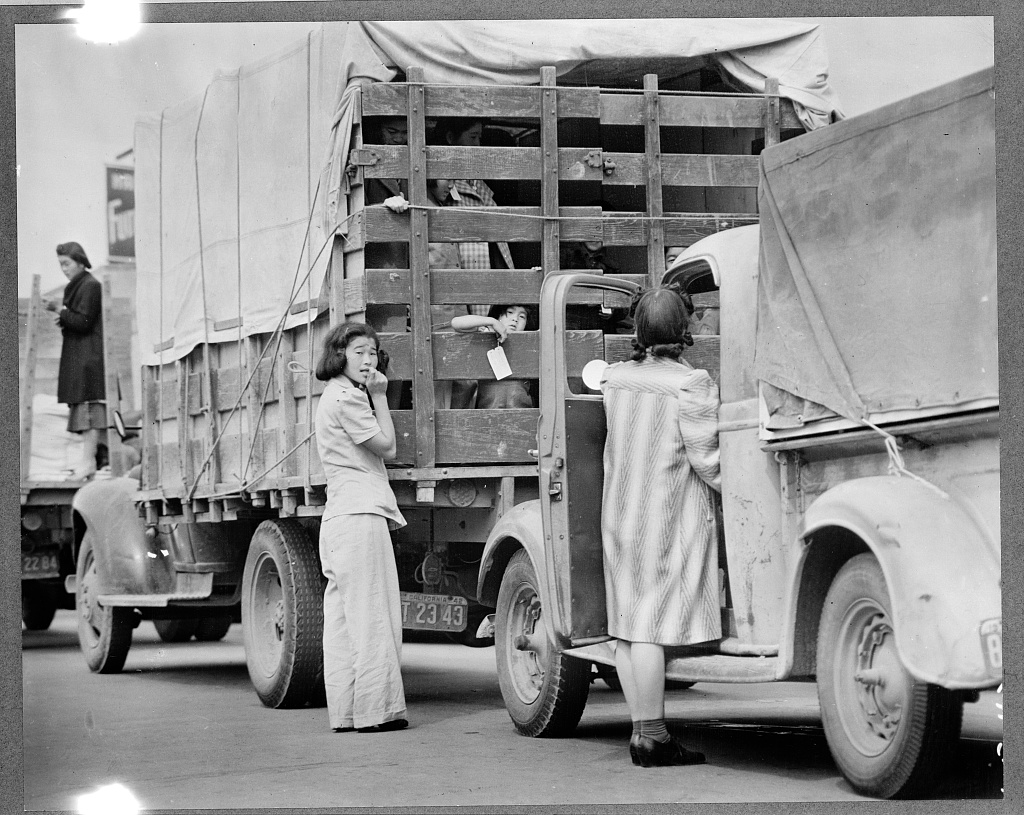June 18, 2024
Oliver Wang, curator of the Japanese American National Museum’s summer 2025 exhibit, Cruising J-Town: Behind the Wheel of the Nikkei Community, which looks at how car and truck culture have influenced the lives of Southern California Nikkei for the past 100+ years, asks:
The photos I’ve seen from Santa Anita and Manzanar show that some families arrived in their own vehicles, which then were impounded. Do we know what happened to those cars? Were families given the cars back upon release? Or were the cars confiscated by the US?
A key part of the standard forced removal/incarceration narrative is the trip to camp, the transition from normal life to life in an American concentration camp. Typically, this trip was made in a bus or train, or often a combination of both. Incarcerees remember trains that were old, slow, and dirty; having to sleep upright in hard seats on overnight trips; and being forced to keep the shades drawn.
But not all incarcerees had this experience. A small but significant minority were allowed to drive their own cars to both the “assembly centers” and the WRA-administered concentration camps. This typically took place in the earliest months of the roundup, most notably at Manzanar. But I’ve also found mentions of at least some incarcerees driving to the “assembly centers” at Santa Anita, Pinedale, Pomona, Stockton, Tanforan, Tulare, Fresno, and Puyallup as well.
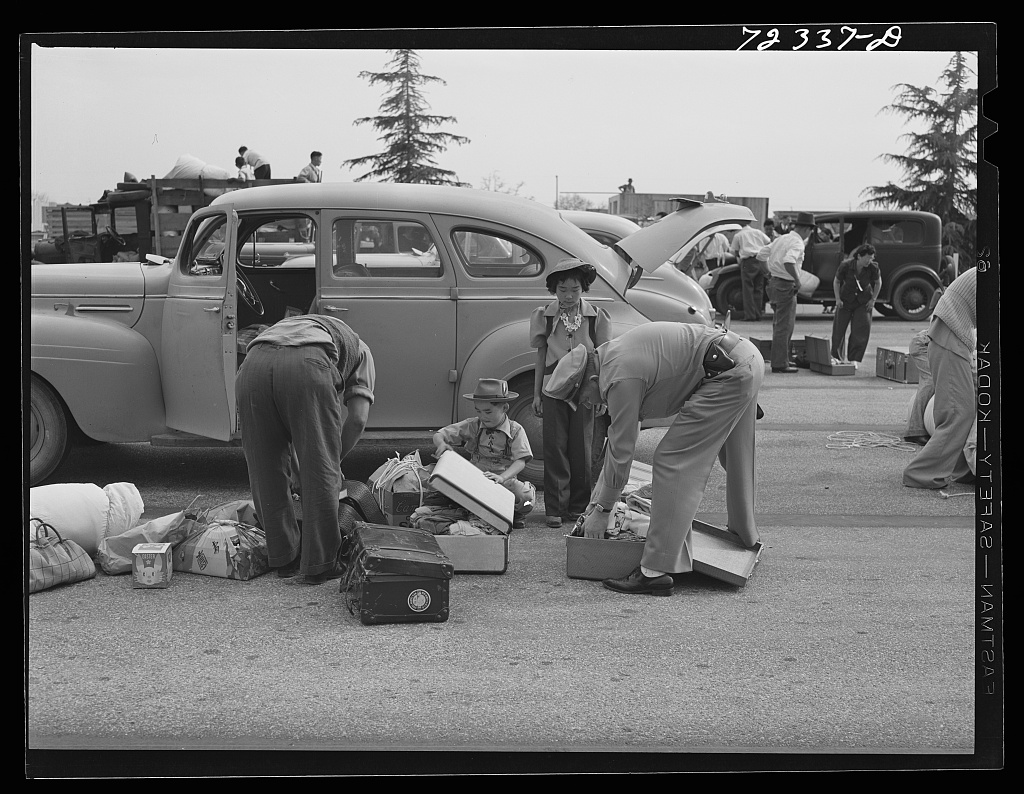
As with many things, though, the story starts with Manzanar. Many of the first to arrive at Manzanar were “volunteers” who had been recruited from various parts of Los Angeles to help to build what was initially called the “Owens Valley Reception Center.” While the first group of eighty-four volunteers arrived by bus on March 21, 1942 — less than a week after construction had begun — many of the 710 who arrived two days later drove their own cars as part of a caravan. Milton E. Silverman, a newspaper reporter who was hired to document the incarceration for the Western Defense Command, reported that the March 23 group was divided into two, with one traveling by train from “the old Santa Fe station near Little Tokyo,” while the other came in a 240-car caravan that left the Rose Bowl at 6 am. Silverman wrote:
“There was every contraption in that caravan from a Model T Ford to a 1942 Chrysler…. By official orders, every car contained a gallon jug of water and enough gasoline to run 300 miles.”
According to Silverman, the caravan drove slowly, “with the speed cut down to accommodate the slowest car,” and there was a ten-minute stop every two hours. The caravan arrived at around dusk, meaning that the approximately 220 mile trip took around twelve hours, an average speed of less than twenty miles per hour.
Inmate accounts tell a similar story. Tadao George Kurata told interviewer Charles Kikuchi that they traveled so slowly that he “almost fell asleep driving.” Isao Kikuchi drove a 1933 Plymouth as part of the convoy and recalled going about thirty “at most.” He recalled being led by an army vehicle, with a state trooper at the rear.
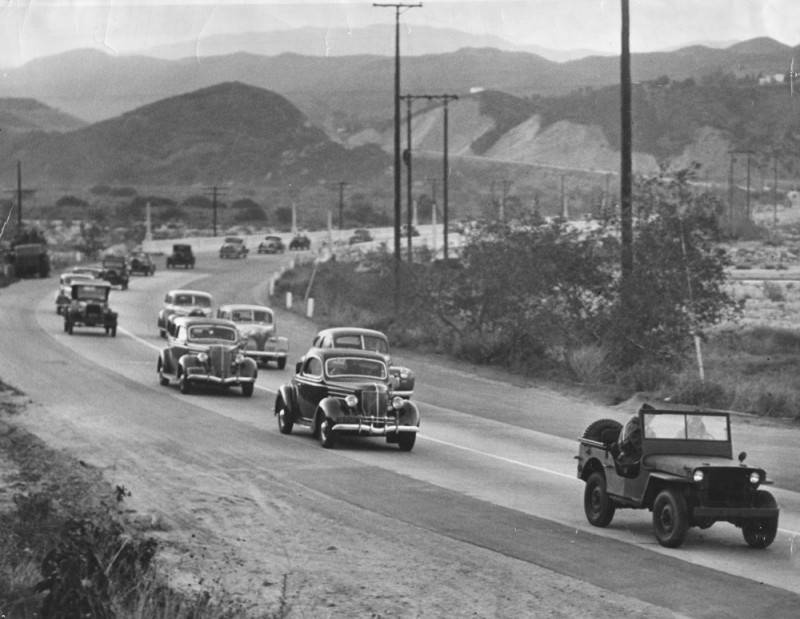
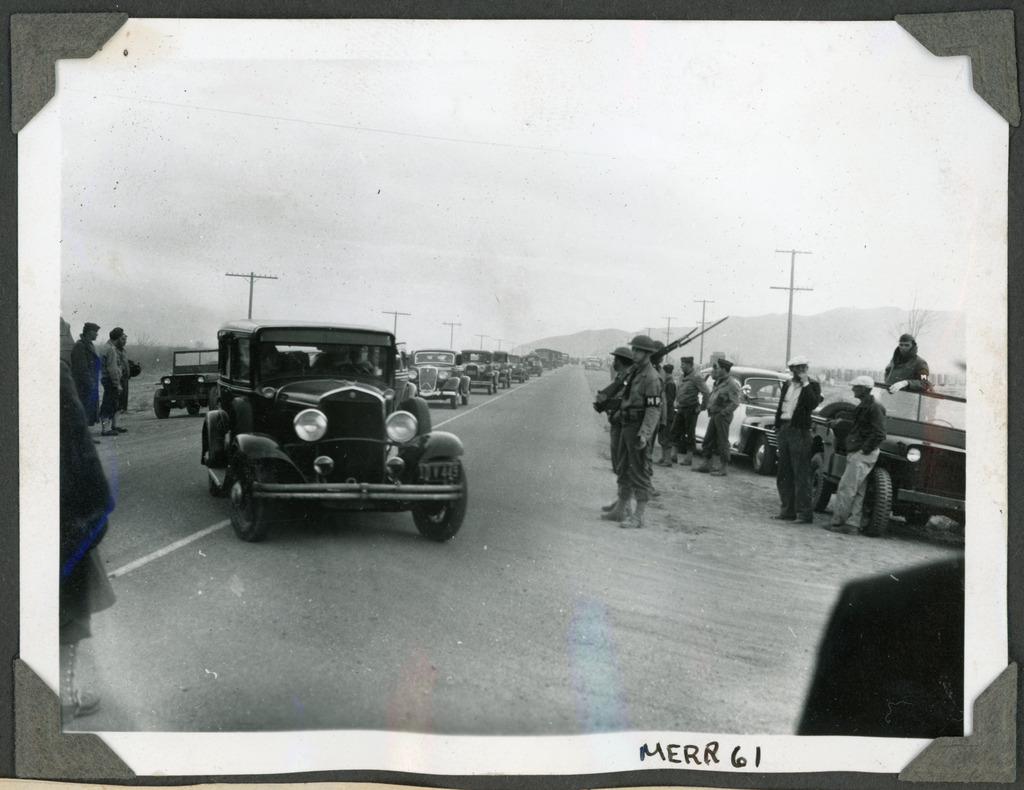

A couple of weeks later, starting on April 3, removal to Santa Anita began. A number of inmate accounts recalled driving there from different parts of Los Angeles. Art Ishida’s family had sold their brand new Mercury convertible for a third of what they had bought it for just three months earlier and so rode with a neighbor from Long Beach. Artist Ruth Asawa rode with her family in their 1926 Buick from Norwalk. Mili Shimonishi-Lamb drove their Pontiac from Hollywood in a caravan that “looked like a circus heading for another city…. [that was] miles and miles long.”
Many of the driving accounts illustrate a key benefit relative to those who were transported by bus or train: it was a way of getting around the requirement that incarcerees take only what they could carry. Silverman wrote that the “cars were adorned with bedding, clothes, suitcases, ironing boards, washing machines, gardening implements, furniture, dishes, and mechanics tools.”
“We loaded everything onto that car,” recalled Frank K. Omatsu, while Isao Kikuchi took tools, clothes, bedding, and his dog. According to Shimonishi-Lamb, “we packed our car, a year-old black Pontiac — on the outside, on the front, in the backseat, and on top with the necessities of life. It resembled the car of a traveling salesman. We wanted to take as much as the car could haul. We had barely enough space in our car for us to sit stiffly and uncomfortably.”
Soon after these caravans to Manzanar and Santa Anita, the WCCA issued a release on April 8 decreeing that “Evacuees will not be permitted to take motor vehicles to the reception centers…” and outlining a process by which inmate cars would be bought by the Federal Reserve Bank based on appraisals by “two disinterested appraisers.” But it seems that at least some inmates were allowed to drive to “assembly centers” for another couple of months.

An early “volunteer” at Tanforan, Fred Hoshiyama drove a 1929 Buick there on April 28. Henry Miyatake and his brother drove to Puyallup in a customized Ford Model A and a contemporaneous report from Pomona notes some cars being driven there as well, both sometime in May.
Upon arrival at the “assembly center,” the cars were unloaded and confiscated and generally sold off by the army, with the meager proceeds going to the inmates. Omatsu recalled his car being purchased by “the government” for $25, while Hoshiyama’s went for $40 and the Asawas’ for “the Blue Book price.” Kikuchi sold the 1933 Plymouth to a neighbor from back home, who had hitchhiked up to Manzanar to buy it. “I wanted to drive it one last time so I just made the wheels spin all the way around the camp and said goodbye. It was in very good condition, so he, that’s why he wanted it,” he recalled.
Other accounts recall less satisfactory outcomes. Miyatake recalled that his brother’s Model A, which he had spent a lot of time and money customizing, was sold at auction. “I think he got ten bucks for that vehicle,” he remembered. “That broke his heart, it was pathetic, he was really sad. First time I seen him cry. But that’s the way things were at that time.”
Silverman wrote that the 150 or so impounded cars at Manzanar just sat, their distributor caps removed, while “the dust keeps on wrecking them.” Ike Hatchimonji recalls seeing soldiers using the impounded cars at Pomona for “a jalopy derby,” where they were “just going around and around, just having a great time.” It was amusing at that time,” remembered Hachimonji. “But when you consider what they were doing, allowed to be done, terrible. I don’t think there was any compensation for those vehicles. They were just given to the military to destroy as they saw fit.”
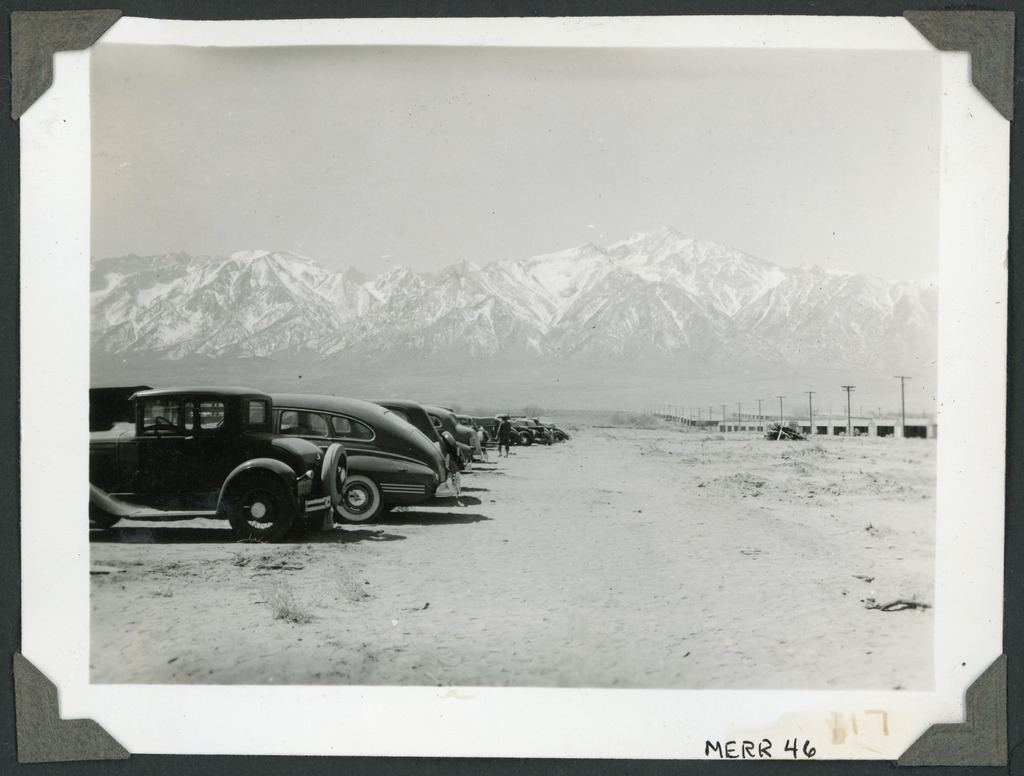
After May of 1942, I found no other accounts of cars being driven to concentration camps. There are certainly other car stories associated with the incarceration, from Rev. Emery Andrews’s “Blue Box” to Ko Wakatsuki’s Manzanar joyride that ends the movie version of Farewell to Manzanar. The early caravans to the “assembly centers” are part of the complicated and fraught story of the roundup and incarceration, and another example of the chaos and seemingly improvised nature of its earliest days.
—
By Brian Niiya, Densho Content Director
Make a gift to Densho to support the Catalyst!
Sources
Milton E. Silverman, “Reception Centers: Manzanar,” April 1942, Appendix 25, Manzanar Final Report, Japanese American Evacuation and Resettlement Records, Bancroft Library, University of California at Berkeley, BANC MSS 67/14 c, folder O1.05:1, https://oac.cdlib.org/ark:/13030/k6vt207b/?brand=oac4.
Tadao George (Cracker) Kurata interview by Charles Kikuchi, July 17, 1944, The Japanese American Evacuation and Resettlement: A Digital Archive, Bancroft Library, University of California at Berkeley BANC MSS 67/14 c, folder T1.973 http://digitalassets.lib.berkeley.edu/jarda/ucb/text/cubanc6714_b282t01_0973.pdf.
Art Ishida interview by Martha Nakagawa, Aug. 24, 2011, Los Angeles, California, Segment 13, Densho Visual History Collection, Densho Digital Archive, https://ddr.densho.org/interviews/ddr-densho-1000-363-13/.
Marilyn Chase, Everything She Touched: The Life of Ruth Asawa (San Francisco: Chronicle Books, 2020), p. 17.
Mili Shimonishi-Lamb, And Then a Rainbow (Santa Barbara: Fithian Press, 1990), p. 63.
Frank K. Omatsu interview by Sharon Yamato, Oct. 24, 2011, Los Angeles, California, Segment 10, Densho Visual History Collection, Densho Digital Archive, https://ddr.densho.org/interviews/ddr-densho-1000-373-10/.
WCCA Release No. 4-10, Apr. 8, 1942.
Fred Hoshiyama, Personal History, [1942], The Japanese American Evacuation and Resettlement: A Digital Archive, Bancroft Library, University of California at Berkeley, BANC MSS 67/14 c, folder B12.35, http://digitalassets.lib.berkeley.edu/jarda/ucb/text/cubanc6714_b024b12_0035.pdf.
Henry Miyatake interview I by Tom Ikeda, Mar. 26, 1998, Seattle, Washington, Segment 22, Densho Visual History Collection, Densho Digital Archive, https://ddr.densho.org/interviews/ddr-densho-1000-53-22/.
Ike Hachimonji interview by Martha Nakagawa, Nov. 30, 2011, Los Angeles, California, Segment 9, Densho Visual History Collection, Densho Digital Archive, https://ddr.densho.org/interviews/ddr-densho-1000-381-9/.
